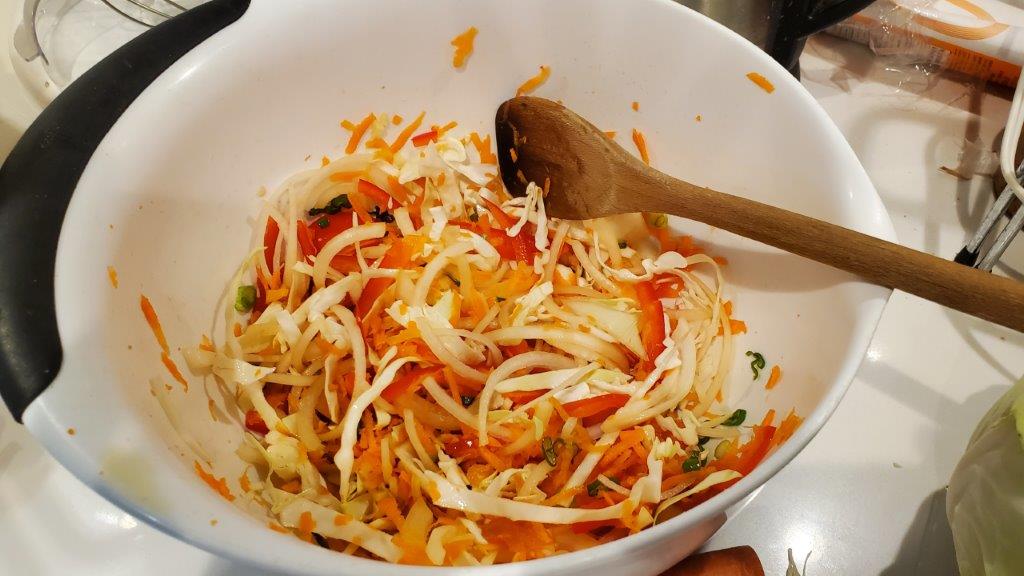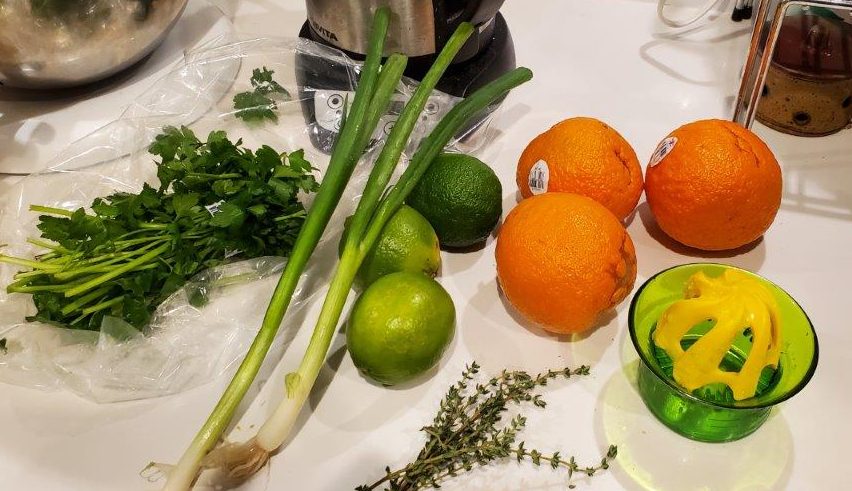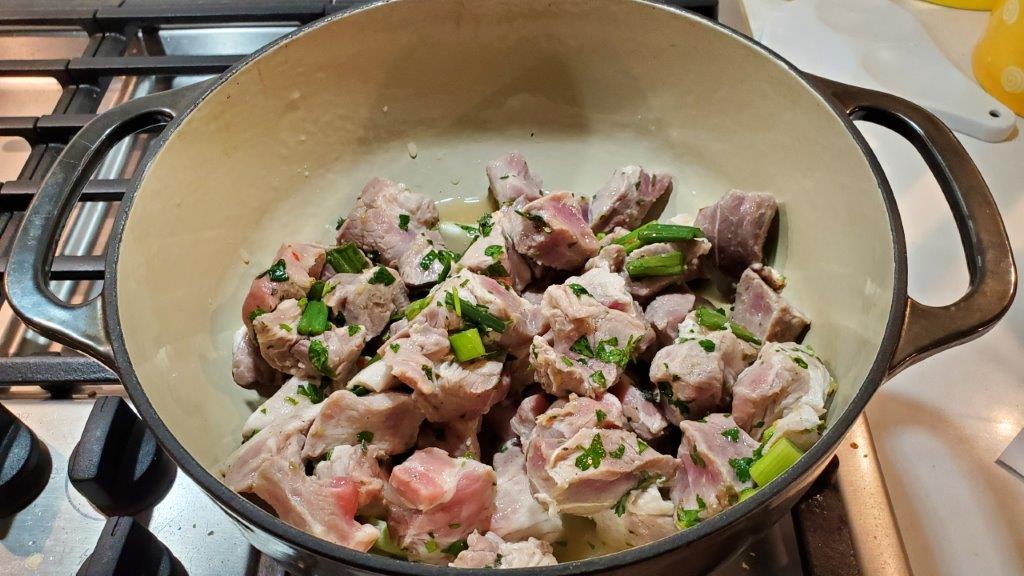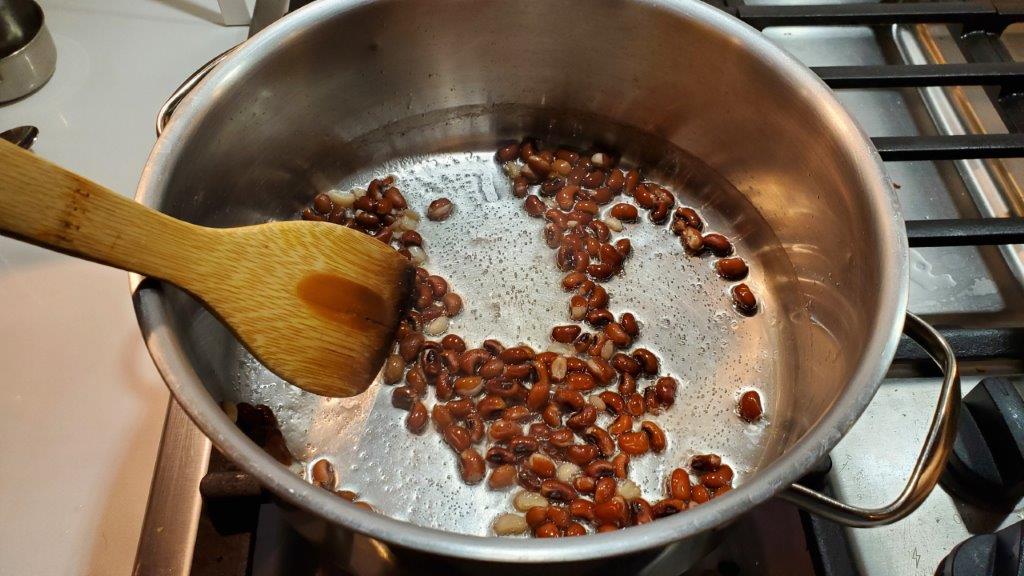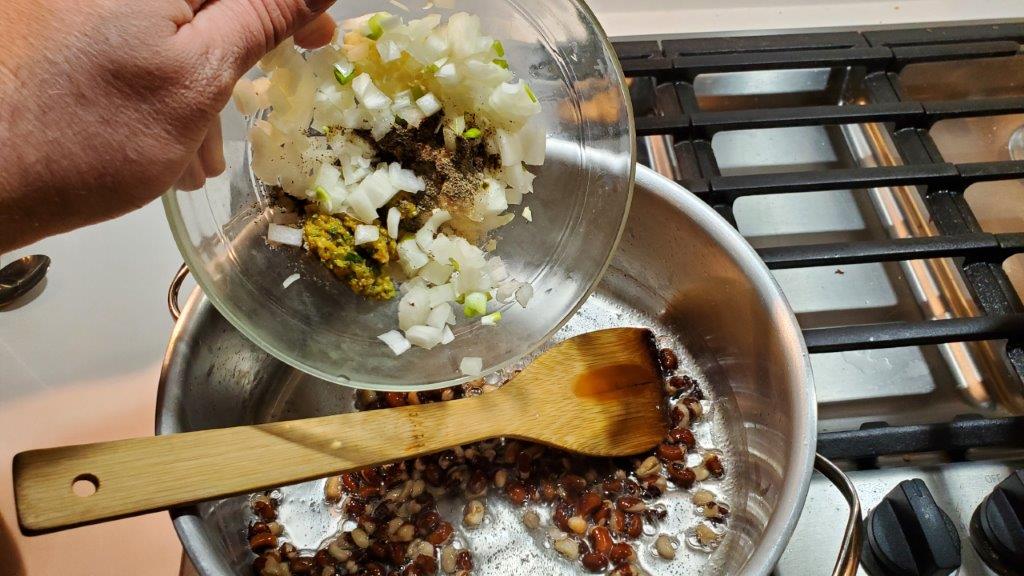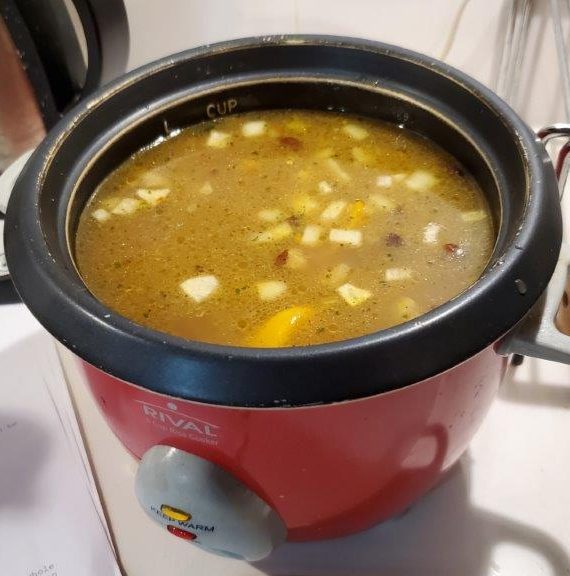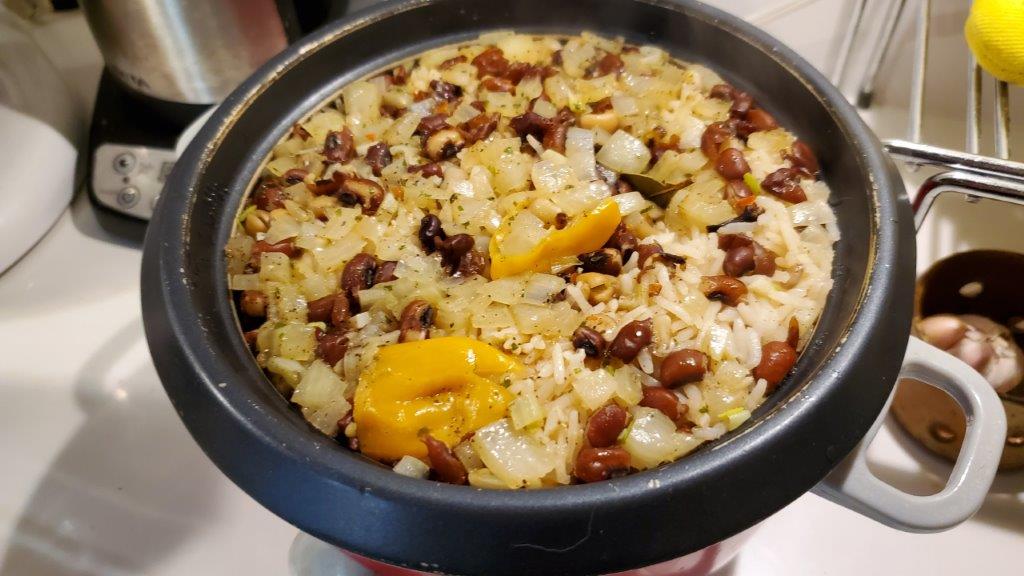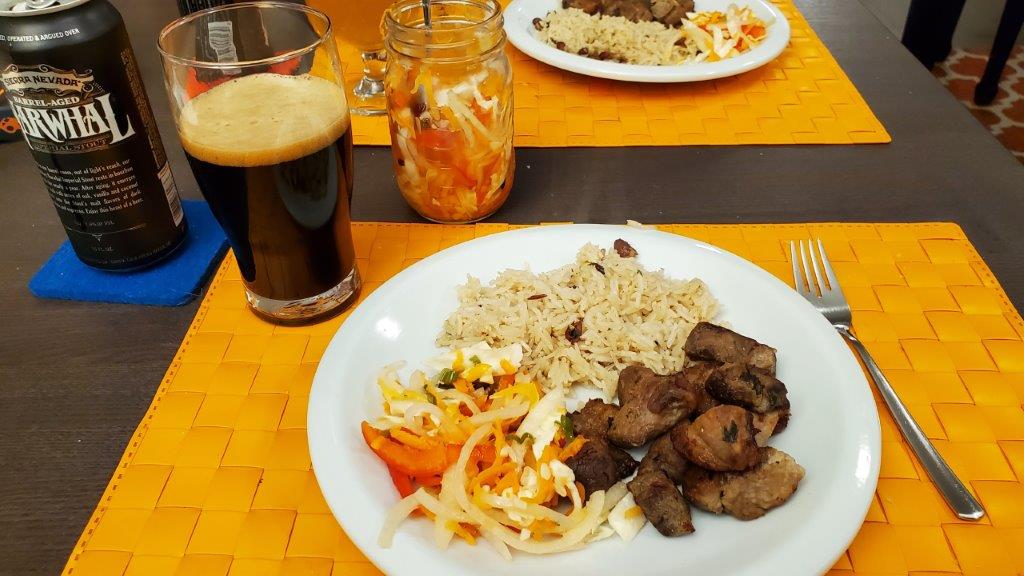It’s ironic – in 2020 and 2021, we started making a lot MORE international meals because the pandemic meant we has lots of free time on our hands. But we’ve been on pause for a bit BECAUSE of the pandemic. Or maybe that’s not ironic – that may only apply to black flies on your wedding day or something.
Next up was supposed to be Guyana, and we were looking forward to sharing the meal with one of my coworkers from that country. However, Omicron came along and shut everything back down again. At which point we just threw up our hands and took a break.
But we’re back now. We’ve stuck a pin in Guyana for the time being, and we’ll come back to it when we are able to get together with my friend, but for today, let’s talk about Haiti!
Haiti is a country which featured the first successful slave revolt in world history, and has then been systematically screwed over by the world community, the natural environment, and in some cases, its own leaders ever since. The “No Reservations” episode on Haiti is particularly gut-wrenching.
On the other hand, the MEAL we made from Haiti was anything but. To start, we had to plan a week or so ahead and make pikliz. Pikliz are apparently THE absolutely ubiquitous condiment on Haiti. They’re very simple – shred some veg, pack in vinegar and wait.
Oh – and make sure to include a truly dangerous quantity of Scotch bonnet peppers.
These are going to be a recurring theme, contained as they were in literally every dish on the table.
A week later, we were ready to.. well, start marinating things for the following day. The two leading contenders when you search for “Haiti national dish” are Pork Griot and a version of rice and beans called Diri Kole. Marinating for the latter just involved putting beans in a bowl of water overnight. (not pictured) Not having any small red kidney beans on hand, we used Adzuki beans. I’m sure it was fine.
Next up, the pork! Pork Griot is a recipe that involves marinating pork in citrus and spices, then boiling it to cook the pork, and finally either deep frying (traditional) or baking (for those who hate deep frying) the chunks to crisp them up.
So lets start with the marinade, at which point we immediately have to back up a step and make green sauce. Haitian green sauce, or Epis, is similar to the green sauce we bought for Grenada, but substantially spicier. What with the Scotch bonnet peppers and all.
And here’s the green sauce ingredients – scallions, thyme, olive oil, parsley, shallots, celery, red pepper, and don’t think we don’t see you hiding there, hot pepper. We see you. This just goes in a blender.
Next up, the actual marinade, which includes a bit of the green sauce along with all this stuff:
So here we have oranges, limes, parsley, thyme, and scallions. But we need to talk about those oranges. Those are Seville, or bitter oranges, used primarily for making marmalade, and only available fresh a small part of the year. We were lucky enough to catch the very tail end of the season and raid the last of the stock at Granville Island. Juice, chop, stir, soak. Here’s a picture of the marinated pork chunks ready for boiling the next day.
The recipe doesn’t call for any additional liquid. I was certain we’d have to add more to keep it from drying out, but nope – with the lid on, more than enough liquid sweated out to keep everything nice and hydrated.
While the pork was boiling, we made rice and beans. First, the beans get a nice long boil with a little garlic.
Next, and this is definitely a first for me, you SAUTEE the cooked beans in oil.
Once that’s been going for a bit, you go in with onion, garlic, and some seasoning, including a very healthy dollop of green sauce.
The final mixture, once cooked a bit, smells amazing. The next step, according to the recipe, is to mix this with rice and cooking liquid (reserved bean water), and then very carefully cook just until all the water is absorbed.
Pfft. Who needs careful? We have a device that has literally no other purpose than to shut off when all the water is absorbed.
I will never apologize for using this thing.
At this point, the pork was nice and tender, so it was time for deep frying!
No, just kidding. To hell with deep frying. Time for baking!
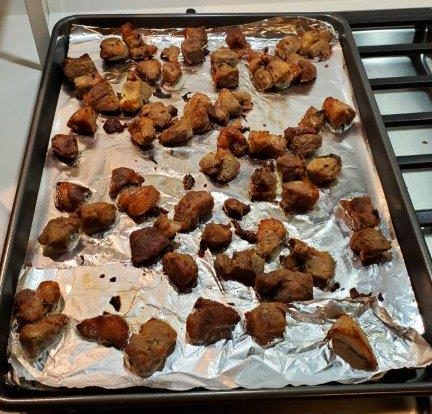
Just LOOKING at this picture is making me hungry again. The smell was amazing. By now, the rice, which was JUST BARELY contained by the cooker, was also done.
Yes, that’s another whole Scotch bonnet. Did we forget to mention that? Anyway, here’s the final plate:
Rice and beans, pork, and a big pile of pikliz. How was it?
It was unreal. As long as you could handle the heat, this was a stunning meal. The pork was crispy on the outside, tender on the inside, and had just the right amount of fat to be delicious without being too greasy. The beans and rice were extremely flavorful, and the pikliz were amazing. But, and I can’t stress this enough, this is one of those plates where you really want to get a little of everything in each bite. At that point, the spicy / sour / salty / meaty combination just blows the doors off.
Haiti, you been done dirty your whole life, but you still have some amazing food.
Next up, Honduras!
Recipes:

